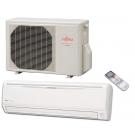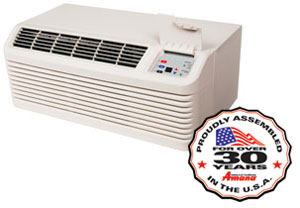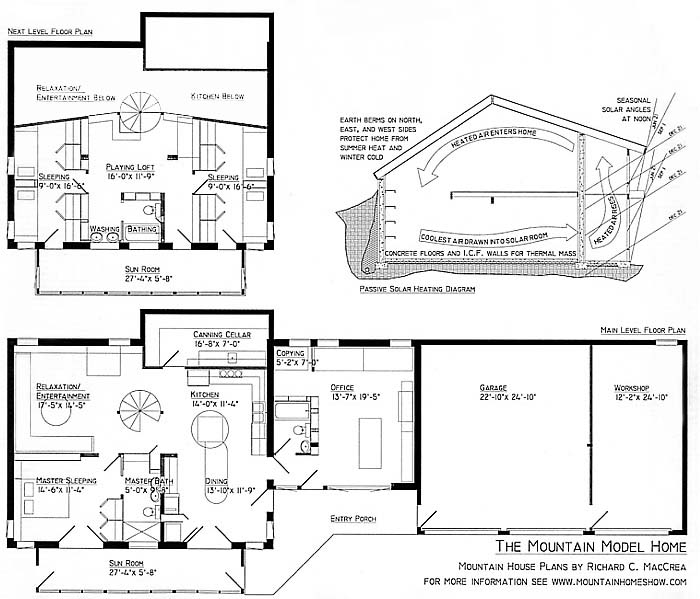Is it necessary to build homes that are five times larger than what most people lived in a few generations ago? The average household has fewer members now. With intelligent planning, a smaller home can often provide a better nest than the typical "McMansions" built in so many subdivisions. We don't have to build unnecessarily large houses just because many others are.
Sara Susanka awoke many to the idea of building smaller and better homes in her book series, The Not So Big House. She notes that many who live in these huge buildings are often not comfortable in them. They are hard to furnish, clean, and maintain. The huge great rooms are seldom used.
In addition to making your home more comfortable, a smaller plan will save a lot of energy. The smaller the home, the less space to heat and cool. You can use the money you saved for better quality materials and furnishings.
*Designing for Your Property
A south facing property is ideal if your roof overhangs protect the glass from the summer sun at noon.
With the addition of a south facing two level solarium,
you can gain free heat from the sun in the winter.
This room would be a great place for keeping indoor plants and having that hot tub.
It would be a bright, cheerful place to enjoy the winter sunshine when it is cold outside.
See more under solar heating below.
*Better Insulation
It is also important for the builder to learn and follow the state energy codes.
A home may have the very best in energy saving features,
but if they are not installed correctly there will be no money saved.
For example, to function correctly, fiberglass insulation must be touching an air barrier.
This may be sheetrock, floor sheathing, or house wrap.
If there is a break in this air barrier, drafts will blow right through the insulation,
robbing it of its value. This is a common problem in attics.
*Air Tight Construction
Lets imagine an average frame home in a subdivision.
The builder built the way he has always done with central heating and air conditioning.
He insulated the wall between the garage and the house,
but did not use any gasket material or air barrier to seal the wall.
Every time the air conditioner comes on the air pressure changes in the house.
This could create a slight vacuum in the house.
Because the garage wall is not air tight, the air condtioner will pull the garage air into the house.
What is in the garage? An idling car? Gasoline? Lawn mower? Left over paint?
People have actually died from this.
Other common areas for air leakage are poorly installed ceiling light fixtures,
electrical outlets on outside walls, ductwork going through an insulated wall, floor, or ceiling,
ventilation lines, and doors and windows.
These leaks can cause the air conditioner to pull dusty attic air,
or damp, smelly crawl space air right inside the house.
If the heater/ air conditioner happens to raise the pressure inside the house when it comes on,
it will push moist inside air through leaks in the walls, ceilings, and floors.
If it is cold outside, the moisture in the air will condense,
providing a continual source of water for mold growth inside the walls.
I hope you can see that an air tight home is better.
For ventilation it is far better to open a window; or have air conditioner with a ventilation system.
All homes are required to be air tight in construction.
There must be a complete air barrier surrounding the entire home.
There are many ways to achieve this.
The sheathing may be air tight enough. If not, a house wrap may be added.
Windows and doors have to be sealed correctly.
Gaskets may be placed between the wall and floor sheathing, also at the ceiling.
In designing and building the home,
it is best to reduce the number of breaks in the insulation of the home.
*Better Heating and Cooling Systems
Where are you going to place your unit? You might think you would want it as far away as possible.
But actually the best place is right in the middle of your home.
With your unit inside, you might be afraid of the noise,
but you can now choose a unit that has a quiet rating.
The worst place is in the attic where it is difficult to maintain.
It would also have to work hard to overcome the extreme temperatures up there.
The garage is another bad place.
Not only does it have to work harder, but if there is even the slightest leak in the return air duct,
you will be pulling all that garage air into your house.
Yuck! I also don't like to place the unit in the basement unless it is insulated.
The unit belongs in the center of the living area. Why?
That is by far the most efficient location.
The unit is inside the air conditioned space where it does not have to work as hard
and the ducts are the shortest lengths possbile.
If we also bring the ductwork inside the air conditioned space
(inside soffits, dropped ceilings, etc.) your energy savings will increase even more.
Let me give you an example. I was measuring the inside of a crawlspace on a remodeling project.
It was very damp and moldy, as many are.
I noticed the ductwork was sagging so I lifted up one duct to see if it was loose.
Inside I heard a giant wave of water!
Because the duct tape had developed some leaks and warm moist air was touching cool air at the ducts
(a very common situation), condensation had accumulated inside the ducts.
There were many gallons of water in there.
Building the ducts inside the heated space elminates this problem.
The ductwork stays close to the same temperature inside an out,
which eliminates this condensation and mold problem. This also saves a lot of energy.
All of this energy savings means that a smaller unit will take care of the heating and air conditioning.
A smaller unit costs less money. You can use this money on a better system and save even more energy.
So how can you be sure you have enough fresh air in your home?
Some new central air conditioners bring in outside air from a place that is clean and fresh.
This air is run through the unit where it is dehumidified and brought to the temperature of the house.
Many states now require this for commercial buildings.
A less expensive version of this is recommended by some energy efficiency experts,
a line connecting the air return plenum with the outside air.
Every time the unit comes on, the blower pulls a little outside air into the plenum,
dehumidifies it, and blows throughout the house.
Be sure this line has an air filter that can be replaced.
Dusty air will ruin the efficiency of your unit.
Pictured is the Fujitsu
Mini Split System An interior unit is mounted inside the house in one or more locations.
Each interior unit is controlled by its own remote and has its own thermostat.
Air is drawn inside the unit, filterd, cooled or heated, and blows right back out.
The interior units are connected to the single outside unite.
There are many other sizes and brands available.
*Insulated Concrete Walls
The insulation and air tightness is much better. In one step the walls are built and insulated.
Many of these companies are designed for do it your selfers if you are able ato build.
The concrete inside the wall also helps stabilze the temperature of the house.
When complete, these walls are very strong and soundproof.
*Earth Berming
When I suggest this I am often asked about moisture problems.
People imagine living in a cold, dark, damp, basement.
Actually, a well designed and built basement is not cold, dark, or damp.
It can be the most comfortable area of the home.
The walls can be protected with gravel and drainage systems, moisture proofing,
and grading the earth to drain water away from the house on all sides.
Most contractors who pour concrete walls guarantee that they will not leak moisture.
Berming the walls has another benefit.
Your home would fit more comfortabley on a steep slope with much less excavation.
*Solar Heating
The first step is to bring a compass to the property and see which direction the views face.
Then the home may be designed to keep out the hot summer sun but let in the warm winter sun.
This may be done by positioning the windows under roof overhangs of the right size.
Not only does this save energy, but it makes the home so much more comfortable!
This solarium will be wonderful in the winter, a room with lots of warm sunshine and a view outside.
Lush plants will make it seem like you are outside.
Imagine a beautiful room that provides free heat.
Would you like to see some of these ideas on a home being built?
We are currently building a model home that demonstrates better building practices for the mountains.
You can learn more about this project by clicking the drawing below.
If you have any questions do not hesitate to contact me.
If you are planning to build in the mountains,
you may make an appointment to see this home under construction.
We will also be having an open house right after our next Mountain Home Show.
How to Contact The Mountain Home Show
Appreciation......
This web site contains information obtained from various sources.
The Mountain Home Show is not liable for the accuracy of this information.
Please contact the source of this information with your questions.
This is very important in the mountains.
For example if your property faces west,
you will need a lot of protection from the hot afternoon sun in the summer.
If your property faces north, you will need extra protection from the cold winter winds.
If you can find a property that faces south, you will spend much less heating your home,
but you will need protection from the summer sun at noon.
Many builders believe that they cannot sell a home if they build with 6" walls.
Time and again I have demonstrated that the extra cost added to a mortgage payment
would be less that the cost of energy saved.
On a $200,000 home the increased cost might be less than $2000 including the cost of more insulation,
wider window and door jambs, and 2x6 studs.
At 6.5% interest this would raise the mortgage payment only $12.64!
To get the best insulation for the least cost I reccomend 2x6 framing 24" on center with 5/8" sheetrock.
Switching to 24" spacing saves energy and lumber costs.
The 5/8" sheetrock will provide a stiff wall with the studs this far apart.
I also reccomend at least R-19 insulation in all walls and floors.
Ceilings should have at least R-38. Many builders reduce the insulation in cathedral ceilings.
While this is legal, there are ways to design the framing to avoid this.
The ceiling insulation is the most critical insulation in the home.
Many believe the false rumor that mold problems in homes are from building too air tight.
Actually these problems can usually be traced to air or water leaks.
The better these are sealed up, the better the indoor air quality, and the more efficient the home.
Lets consider an example.
If your electric heater or air conditioner was built before 1995,
it would save you money to throw it out and get a new one, even if it is running well.
Newer units are so much more efficient that they save more money than they cost
when compared to the older ones.
Compare the energy efficiency rating of your unit with the new ones available today.
Most electric companies will finance a new unit for you
and your payment may be added to your electric bill.
Chances are your new electric bill will be less even with the extra payment added in!
In fact electric heat is now considered less expensive than propane or natural gas for heating.
There are other ways to improve the efficiency of your HVAC system. Ductless mini split systems are just beginning to become popular in this country.
It takes a lot of electricity to blow air down the small ducts to each room.
Ductless systems save this by eliminating the need for ducts.
They have one outside unit like standard systems.
But the single inside unit is replaced with several inside units placed in strategic locations.
They may be mounted on the ceiling, wall, or floor.
Each unit has its own thermostat which can be controlled by a remote.
Another advantage is being able to air condition parts of the home differently than others.
They are also less expensive to purchase and install.
There is the disadvantage of not having air blowing as evenly throughout the house.
This can be partially overcome with better insulation and ceiling fans.
Ductless mini split systems are just beginning to become popular in this country.
It takes a lot of electricity to blow air down the small ducts to each room.
Ductless systems save this by eliminating the need for ducts.
They have one outside unit like standard systems.
But the single inside unit is replaced with several inside units placed in strategic locations.
They may be mounted on the ceiling, wall, or floor.
Each unit has its own thermostat which can be controlled by a remote.
Another advantage is being able to air condition parts of the home differently than others.
They are also less expensive to purchase and install.
There is the disadvantage of not having air blowing as evenly throughout the house.
This can be partially overcome with better insulation and ceiling fans. Another new idea for this country is called a PTAC System , a "package terminal air conditioner."
Pictured is a model manufactured by Amana. There are many sizes and brands available.
Many of these produce heat and cooling by means of a heat pump.
Some have auxiliary heat strips for back up when the temperature is too cold outside for the heat pump to work.
These units are a one piece system that slides into a hole in the wall and plugs into an outlet.
Because these units are not pushing air through a duct, they can achieve very high levels of efficiency.
Some of the uinits have a damper that can be opened to bring in fresh air.
Most are controlled by a built in thermostat with various settings.Many offer remotes and programmable thermostats.
The advantages are high energy efficiency, easy installation, and low cost.
Another new idea for this country is called a PTAC System , a "package terminal air conditioner."
Pictured is a model manufactured by Amana. There are many sizes and brands available.
Many of these produce heat and cooling by means of a heat pump.
Some have auxiliary heat strips for back up when the temperature is too cold outside for the heat pump to work.
These units are a one piece system that slides into a hole in the wall and plugs into an outlet.
Because these units are not pushing air through a duct, they can achieve very high levels of efficiency.
Some of the uinits have a damper that can be opened to bring in fresh air.
Most are controlled by a built in thermostat with various settings.Many offer remotes and programmable thermostats.
The advantages are high energy efficiency, easy installation, and low cost.
Insulated concrete walls have been popular in Canada for decades.
They are usually made by stacking foam blocks that have the middle core designed
for adding steel reinforcement and poured concrete.
While these walls are more expensive than standard construction there are some advantages.
Why would anyone want to bury the walls of their home?
Because it saves a lot of energy and makes the home quieter.
The ground temperature in the southern Appalachians stays at 55 degrees year around.
When air conditioning your home in the summer,
would you rather have the outside of your walls against earth that is 55 degrees
or air that is 100 degrees?
The same is true in the winter.
Which is better against your house, earth that is 55 degrees, or air that is 0 degrees?
Earth berms against the north side can also protect the home from cold winter winds.
The faster the wind, the less your insulation works.
The wind literally sucks the heat right out of the house.
An earth berm can divert the wind away from your home.
Most people do not want solar heating because they think their home
would look like one of those ugly solar homes of the seventies.
But we have learned a lot since then.
I design many homes with passive solar heating and passive cooling.
Many times my clients can't even tell the difference until I show them what I have done. 
Some of my clients are willing to go even further.
They would like me to design a sytem in their home to heat the air with the sun
and pump this warm air into the house.
This diagram is of an experimental model home currently under construction.
You can see how this works in the diagram.
Sunshine heats the air inside the solarium, causing it to rise.
In the summer the overhang protects the glass from the sun.
But when the sun is lower in the winter,
it shines inside this room warming up the air and the materials.
Doors and windows may be opened to allow this air to circulate inside.
Warm air rising will push the air into the upper level of the house.
This will push air over the loft,
and the coolest air downstairs will be drawn into the solarium to be heated.
I can add automatic blowers to take advanatage of this heat when no one is home.
How to Contact Richard C. MacCrea
 My Facebook Page
My Facebook Page
(Design news and ideas)
Email Me
(Opens an email window)
800.738.8781 P.O. Box 446, Murphy, North Carolina 28906
Other Pages on this Web Site
 The Mountain Home Show, Home Page and Site Map
The Mountain Home Show, Home Page and Site Map
(How to find what you're looking for)
The Next Mountain Home Show Program
(For guests and exhibitors)
How to Get in The Mountain Home Show
(For exhibitors)
Articles
(About designing, building and remodeling a mountain home)
The Mountain Model Home
(A home that experiments with extreme energy efficiency)
The Mountain Model Cabin
(A cabin that experiments with small size and energy efficiency)
Construction Diary
(The joys and frustrations of building these two model homes)
Home Designing and Planning
(How to get plans for building or remodeling your home)
 Email Us
Email Us
(Opens an email window)
Like our Facebook Page
(Join our Mountain Home Show Community for news and contacts)
The Mountain Home Show, P.O. Box 446, Murphy, North Carolina 28906-0446
The Mountain Home Show owes its success to the businesses that participate in the show.
They arrange such wonderful exhibits.
It is obvious that they take great pride in their work and our show.
